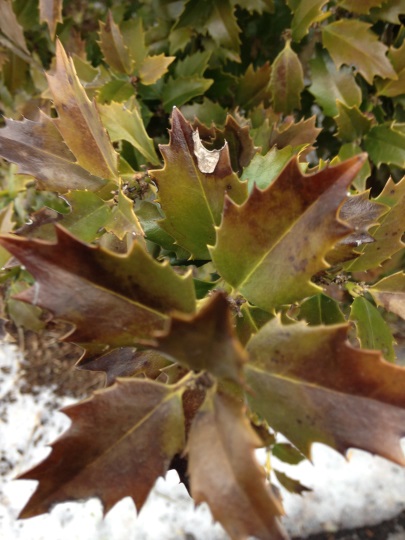You may ask “How does winter burn work?” Evergreens continue to loose water vapor through their leaves, even during the winter. The tree or shrub has to replace the moisture by pulling water up through its root system. When the ground is frozen, the roots cannot absorb water to maintain moisture in the leaf, you can say it’s like a winter drought. The water is there, but the tree or shrub is not able to pull it in. Winter burn does not always show signs during winter but can rear its ugly head in early spring. Though leaves may not appear affected at first, when the temperature begins to change so does the leaf, exposing the damage. Sometimes winter damage may appear only on one side of the plant—whichever side is exposed to more sun or wind—but I have seen it take the entire plant as well, most commonly new plantings.
If you have trees and shrubs that have suffered from winter burn you can prune out the affected areas, but keep in mind that the stem may be damaged as well. If you start cutting out the burned area, look for the green on the inside of the stem that will indicate you have removed all affected parts.
When spring comes back around and your holly or evergreen is shedding leaves sporadically, that is the plant’s way of releasing damaged material. Don’t panic just yet; if you experience this, simply do the scratch test to look for green living tissue. If you find green living tissue, the plant will still try to leaf back out but will use large amounts of energy and water. To help with the re-leafing process, make sure the plant has plenty of water in the spring and nutrition such as fertilizer or compost.





